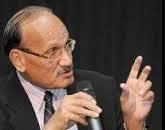
“NEW THEORY THAT PREVENTS GROIN HERNIA FORMATION” As far as groin hernias are concerned, Prof. Dr. Desarda has raised questions about the theories mentioned in the text books that prevent inguinal hernia formation. Obliquity of inguinal canal or shutter mechanism or high muscle arch or patent processus vaginalis, etc. are not the real factors that prevent hernia formation in the normal individuals.
Chronic cough or job of weight lifting is also not real factor that cause hernia formation in the normal individuals. Because not every individual having bronchial asthma develop hernia or every coolie on the railway platform develop hernia. It means these are not the real factors. The real factor that prevents hernia formation in the normal individual is presence of aponeurotic extensions from the transversus abdominis aponeurotic arch in the posterior wall of the inguinal canal. (REF: Desarda MP. Surgical physiology of inguinal hernia repair. BMC Surgery 2003, 3:2). Current inguinal hernia operations are generally based on anatomical considerations. Failures of such operations are due to lack of consideration of physiological aspects. Some questions related to the physiology of the inguinal canal or factors that prevent herniation still exist.
Lateral and cephalad displacement of the internal ring beneath the transversus abdominis muscle and approximation of the crura results in a shutter mechanism at the internal ring. When the arcuate fibers of the internal oblique and transversus abdominis muscle contract, they straighten out and move closer to the inguinal ligament (shutter mechanism at the inguinal canal). This opposite movement (upward & downward) of the same muscle needs proper explanation. The term "obliquity of the inguinal canal" is not a perfect description since the spermatic cord is lying throughout its course on the transversalis fascia. Repeated acts of crying, thereby increasing the intra-abdominal pressure do not increase the incidence of hernia in new born babies in spite of the almost absent "obliquity of the inguinal canal" or "shutter mechanism".
Similarly, every individual with a high arch or a patent processus vaginalis does not develop hernia. Factors that are said to prevent herniation are not restored in the traditional techniques of inguinal hernia repair and yet 70–98% of patients are cured. Then what are the additional factors that play a role in the prevention of hernia after surgery? Then what are the factors that play a role in the prevention of hernia after surgery? It is the aponeurotic extensions that prevent hernia formation in the normal individuals and if these are absent or deficient then only that person will develop hernia any time in his life time (See photograph). And therefore, if you wish to develop a new hernia repair technique that can give complete cure after surgery then you will have to replace these absent aponeurotic extensions.
The author's new technique of inguinal hernia is based exactly on this concept and therefore there is virtually no recurrence after surgery. The author conducted this study in 200 patients who were operated by his technique under local anaesthesia, and observed the changes in the physiology of structures in and around the inguinal canal, before and after repair of the inguinal hernia. The author described for the first time, a new method of inguinal hernia repair based on the physiological principles in which absent aponeurotic extensions are replaced with a live, dynamic, strong and active muscle strip from the external oblique aponeurosis. Therefore, it gives compete cure from hernia without associated complications seen in mesh or laparoscopic surgery.

Comments should be on the topic and should not be abusive. The editorial team reserves the right to review and moderate the comments posted on the site.